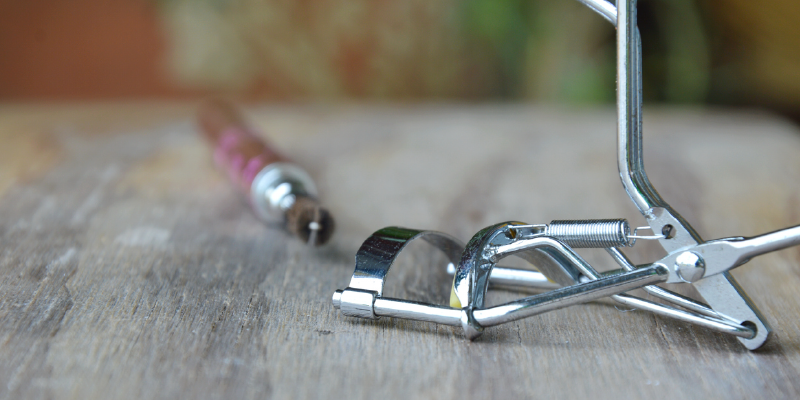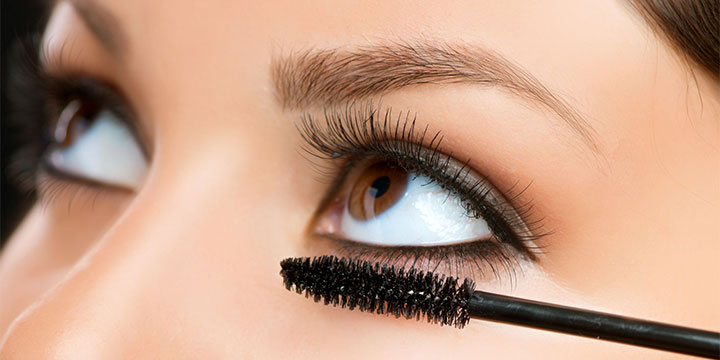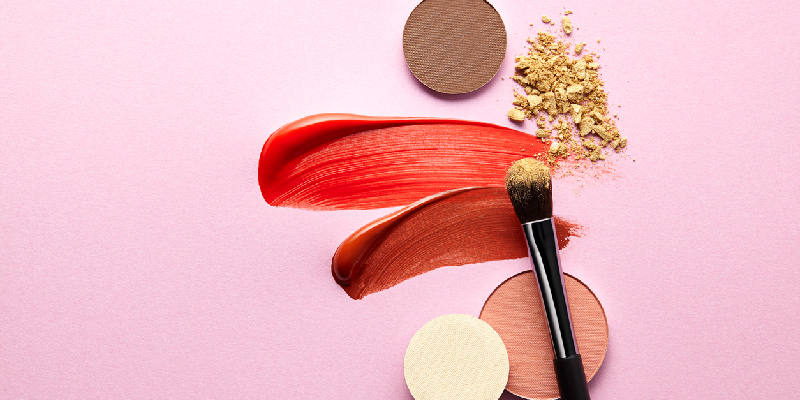If dry, easily irritated eyes are an everyday battle for you, putting on makeup probably isn’t a walk in the park, either. The problem is that many cosmetic products can cause allergic reactions and other signs of irritation for people with dry eyes. The good news is that there are a few things you can do to help alleviate symptoms of dry eye while still wearing makeup.
Start with Clean Eyes and Brushes

Before you do anything, make sure your eyes and makeup brushes are clean. Applying dirty makeup brushes to clean eyes or using a clean brush on dirty eyes defeats the purpose of the other, so make sure you do both regularly.
For many people with dry eye syndrome and other lid-margin conditions, bacteria and/or a specific type of mite called Demodex are the underlying cause of dry, red, itchy, and uncomfortable eyes. To help address the root of the problem, use an eye cleansing product that contains 4-Terpineol, the most effective compound found in tea tree oil at eliminating Demodex [1].
Once you’ve washed your eyes and have a clean slate to work with, make sure you also wash your makeup brushes, especially the ones that come into contact with your eye area. Just make sure you don’t clean your brushes using a product that could potentially cause skin or eye irritation if some end up being left over on the brush. Most skincare and beauty stores sell safe, gentle brush cleaners for this purpose.
Try Lubricating Eye Drops

If the underlying cause of your dry eye is bacteria-related or an overabundance of Demodex on your eyelids and eyelashes, lubricating eye drops won’t “cure” dry eye. But what they can do is help to wet your eyes before you apply makeup to help reduce redness and irritation that might otherwise immediately develop. Try using plain lubricating eye drops 10 to 20 minutes before putting on your makeup to help make your eyes more comfortable.
Look for Hypoallergenic Cosmetic Products
Lots of different makeup brands are now offering hypoallergenic products, which can help to minimize allergic reactions and eye irritation by eliminating known allergens from your cosmetics. If you already have a brand that you like but that you think might be contributing to your dry eye symptoms, check to see if it offers hypoallergenic alternatives. If not, try a brand such as VMV Hypoallergenics or Mineral Hygienics that focuses on offering these types of products.
Opt for Creams Over Powders
Many eye shadows and even eyeliners come in powder form, but loose powder can much more easily make its way into your eyes than a cream, upping the chances of dryness, redness, and itching. Because creams tend to stay in place much better, on the other hand, they are preferred for dry eye sufferers and anyone having trouble managing eye allergies.
If you are going to use a powder-based product, tap off the excess makeup from your brush before applying it to your eyes to help reduce the amount of loose powder that could end up irritating your eyes.
Rely on Lipsticks and Blushes to Do the Heavy Lifting

Don’t forget that wearing the right makeup on other areas of your face can help to make your eyes pop without having to pile on irritating makeup directly to your eyelids or even your eyelashes. Bold lip colors are a trend right now anyway, so why not take advantage of this and let your lips and rosy cheeks accent your eyes for the perfect look without red, puffy eyes?
Wash Your Makeup Off Before Bed
Sleeping with your makeup on, especially eyeliner and mascara, can allow bacteria to build up and make dry eye and blepharitis symptoms worse. Make sure you always completely remove eye makeup in the evening before going to bed to help keep your eyes clean and healthy.
In Summary
Just because you have dry, itchy eyes don’t mean that you can’t wear makeup. The solution could be as simple as finding the right cleanser for optimal eye hygiene, combined with a few easy tips for choosing and applying your makeup.





